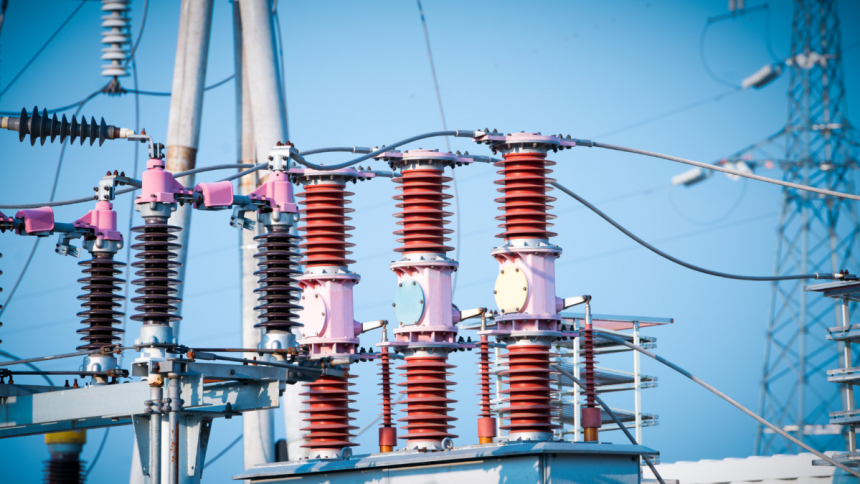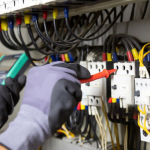In industrial environments, power interruptions can slow down production, damage equipment, and raise safety concerns. That’s why reliable power distribution isn’t just helpful—it’s essential. For facilities running heavy-duty machines, overhead systems offer a practical way to keep operations steady and efficient.
Unlike traditional wiring setups, overhead power distribution systems support flexible layouts, reduce hazards, and simplify expansion. Whether you’re moving robotic arms or scaling up production, these systems make it easier to adapt without major disruptions. As demands grow, having a dependable setup in place helps teams stay focused on output—not on troubleshooting electrical issues.
Adapting Power Distribution Busway for Heavy-Duty Operations
Overhead power distribution busway systems help facilities handle large electrical loads with ease. This setup avoids many of the limits that come with traditional wiring, making it easier to keep steady power flowing to essential equipment. With busway systems, businesses can stay focused on productivity without constantly worrying about electrical failures that could stop operations.
Flexibility is a major benefit when using these systems. Work areas can be redesigned or expanded without big infrastructure changes, especially when using a power distribution busway that allows for quick reconfiguration. A facility might shift a CNC machine from one bay to another to accommodate a new production line, completing the electrical adjustment in just a few hours. This makes it simple to move CNC machines and robotic systems around as needed.
Avoiding Downtime in High-Intensity Work Environments
Fast-paced operations rely on a steady power supply to keep production moving. Modular overhead systems allow for quick adjustments when equipment layouts shift or power demands increase. With plug-and-play components, teams can reroute power with minimal disruption. This helps avoid costly slowdowns, especially during peak periods.
Planning ahead for power changes—and making sure every team member knows the steps—keeps workflows steady even when unexpected needs arise. Posting updated power layouts in common areas like break rooms or control stations helps workers stay informed. A flexible setup means facilities can adapt faster, whether scaling up production or rearranging work zones to meet new goals.
Powering High-Load Equipment Without Infrastructure Bottlenecks
Keeping voltage levels steady is key for high-demand machines to work properly. Power supply changes can lead to lower efficiency and poor product quality. Overhead power distribution systems help avoid bottlenecks by placing power tap-off points at smart intervals. This setup lets machines connect closer to their power source, reducing strain on the system that often happens with traditional layouts.
These systems meet a wide variety of power needs in industries like manufacturing and automotive. They help keep operations running at their best without overloading circuits. A good practice is to regularly review power needs and check that tap-off points are set up correctly for both current equipment and any future expansions.
Strengthening Workplace Safety with Overhead Power Systems
Safety is a top concern in industrial settings, where risks come from many directions. Overhead power systems take care of one major hazard: cables on the floor. Moving cables overhead removes tripping risks that come with traditional wiring. This setup creates a safer environment for employees working in busy areas. With fewer obstacles, there’s a lower chance of accidents, allowing teams to focus on their tasks without worrying about getting hurt.
Upgrading to heat-resistant busway systems adds another layer of safety. These systems lower fire risks that can come from older conduits. Organized power distribution not only improves safety but also makes emergency responses faster and more effective. To keep safety measures working well, it’s important to inspect and update power distribution systems on a regular basis.
Scaling Electrical Capacity for Changing Industrial Demands
Modular power distribution systems are a smart choice for businesses dealing with changing production demands. Their flexibility makes it easier to expand production lines without major electrical overhauls. Switching to a scalable setup helps companies adjust to workflow changes, supporting both today’s operations and tomorrow’s growth.
Adding renewable energy to modular systems helps meet the growing need for sustainable practices. As regulations shift, combining traditional grids with hybrid setups makes it easier to stay on track and keep things running. Power monitoring tools with real-time data help systems adjust to changing demands.
Overhead power distribution busway systems offer a smart way to keep up with shifting industrial demands. They make it easier to move high-load machines like CNCs or robotic arms without major electrical changes. Downtime drops when power can be added or adjusted quickly, and keeping cables off the floor helps reduce accidents and fire risks. Routine checks on power loads and tap-off points keep operations running smoothly. Training your team to handle changes on the fly supports fast-paced production environments. For facilities looking to stay efficient, safe, and adaptable, busway systems are a practical solution worth integrating into future plans.
Lynn Martelli is an editor at Readability. She received her MFA in Creative Writing from Antioch University and has worked as an editor for over 10 years. Lynn has edited a wide variety of books, including fiction, non-fiction, memoirs, and more. In her free time, Lynn enjoys reading, writing, and spending time with her family and friends.















